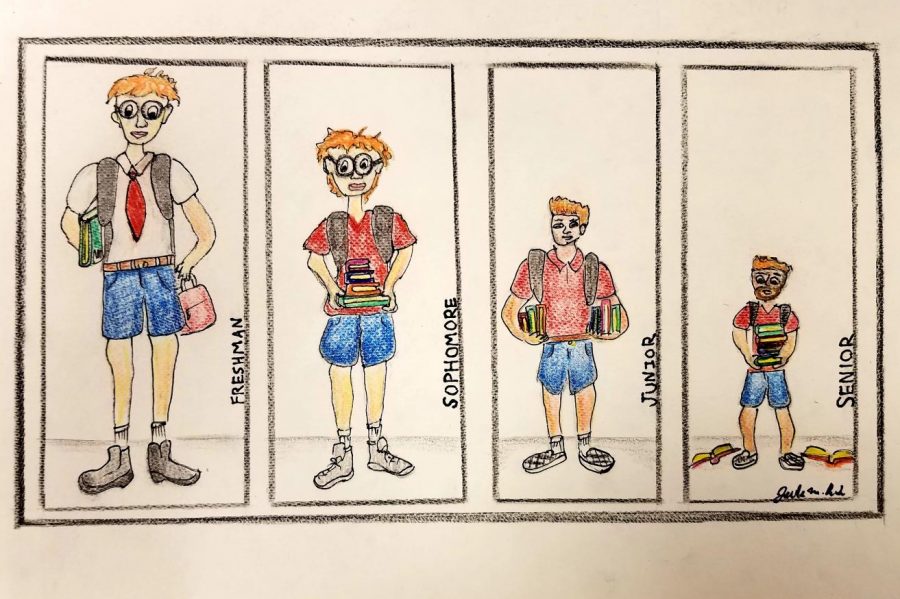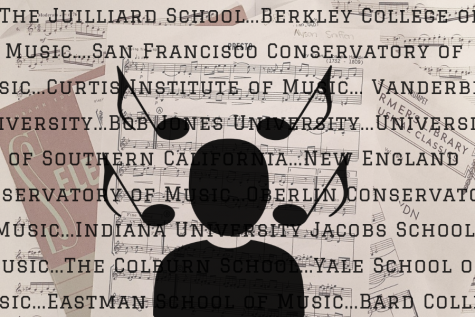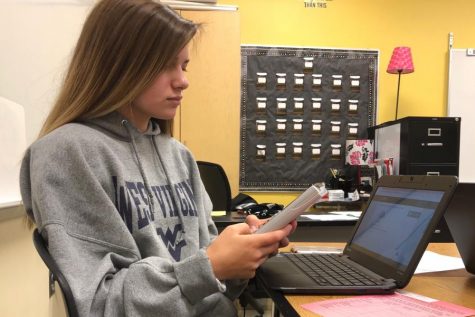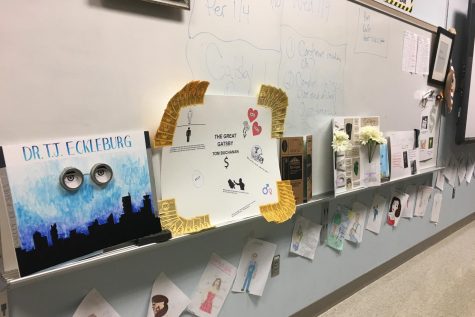Juniors beware: Are you ready to face these trials of junior year?
September 24, 2018
My fellow juniors: It’s a universally-known fact that junior year is the toughest year in high school. It can seem like everything is happening at once, that you have a mountain of work to do to prepare for college, and that your future is approaching at break-neck speed. It is true that juniors are expected to accomplish a lot in one year, but fear not–all the work you’re doing now is going to help you bridge the gap from high school to whatever comes after. Below are listed the top three trials of junior year – and how you can get through them.
Juniors have to deal with standardized tests like the SAT and ACT, challenging classes, hectic schedules, and the search for colleges. With so much on our plates, it’s no wonder we’re so stressed. According to a poll posted on The Lance’s Twitter, 53% of students starting junior year rated their level of stress as a four out of four. Chances are, that’s because of the looming threat caused by the following three trials.
Trial #1: The SAT and ACT. These two tests can be determining factors for many colleges, so the pressure to succeed can often cause students to panic.
Many students are confused as to how these two tests are different.
Guidance Counselor Paula Larson said, “Many colleges accept both or either of the tests as part of the application process. While the SAT does give some sub-score information about science and social studies, there are not separate sections on the topics. The ACT has a separate science section.”
Larson said, “I think colleges are looking at more of the whole picture and not just the test score. While some colleges are test optional and that number is growing a bit, most colleges do want to see ACT or SAT scores and I can’t say there is a strict number that is needed. I would think scores over 1100 total.”
Junior Alyson Sniffen said, “The pressure to do well on the SAT and ACT is so high that I fear that if I don’t do well, I can’t go to college. It makes me put a lot of pressure on my myself.”
Though standardized testing can feel like the end of the world, it’s best to go into it thinking of it as simply another test. Another key tip for success is to start studying, and start studying soon, rather than trying to cram the night before the test. In this case, being the turtle instead of the hare means slow and steady wins the race.
Sniffen says, “I’ve been doing a lot of planning. I’ve worked out exactly what skills I need to study for the SAT and ACT and have been reviewing them as much as I can.”
Khan Academy, which is linked to College Board, can be a great source for SAT preparation, as it has questions in the format of the actual test. This website also offers practice tests, and it can help students improve specific skills when they input their PSAT scores into the website. By setting up practice sessions of 15 minutes a day, you can ensure that you’re setting yourself up for success on the SAT.
For especially difficult subjects, a tutor might be able to help out more than a website. Khan Academy is a great option for strengthening skills pertaining to English and Math, but for students who need more help, tutoring might be the better choice. Tutors can also help students get out of the habit of procrastinating, and pay more attention to the student as an individual. Visit Mrs. York’s room, C204, from 2:30 to 3:00 for tutoring from honor society students.
Trial #2: Busy Schedules. This trial is one that juniors have dealt with in the past, but rarely to this extent. In junior year, students are faced with AP classes, dual-enrollment courses, and CTC (oh my!) at a level many juniors have never before experienced. Many juniors are taking multiple AP or dual-enrollment classes for the first time in their lives, as well as joining more extracurricular activities like honor societies, so workloads and schedules this year can be intense.
This hectic time can leave a lasting impression on students years into the future. Second-year college student Madeline Kullgren said, “My junior year was my busiest high school year. I took three AP classes and played volleyball all year round. I also joined the Spanish National Honor Society.”
“The most important part of junior year was learning how to balance a challenging academic schedule with other commitments,” she added.
To better manage your schedule, you may want to buy or create an agenda to write down homework assignments, test dates, and after-school activities. This will help you stay organized and on top of everything you need to accomplish.
Juggling higher-level classes and extracurriculars can be a challenging prospect, but learning to balance everything is a mandatory skill in life. Kullgren said that doing all of that work allowed her to have a much more flexible schedule as a senior.
Workloads during junior year can be hard to manage, but doing so will develop skills that will last a lifetime and the knowledge that you’ve made life that much easier for your future self.
Trial #3: The College Search. Junior year is when most high school students really begin to think about the future, and the options can be overwhelming. It’s difficult to narrow down the choices (with over 5,000 US colleges to choose from, as well as non-college options), and thinking about life after high school can be a daunting endeavor.
Sniffen says that she’s excited for life after high school, but that “there’s also a lot to do this year to prepare for college which I hadn’t felt in previous years.”
Kullgren currently attends Goucher College. She said, “I didn’t do much research on my own until senior year,” but continued to say that she “wouldn’t necessarily recommend to put off searching for colleges, but rather just to keep in mind that it’s okay to not have everything figured out so early on.”
“I will add that because I waited until senior year, I put a lot of extra stress on myself,” said Kullgren.
Thinking about life after high school can be nerve-wracking, but it can also be exciting. After all, though it may be difficult, junior year is the time when students build up the foundations they’ll need to meet their goals in the future. Choosing a path for the future can be the hardest part, but once you have a general idea of what you want to pursue, it’s easier to find the steps to take from there.
College Board, again, can be extremely helpful in looking for colleges. Larson said, “I like the search in College Board where you put in various wants such as school size, major, location, and activities. It will give you a list of colleges that meet your criteria.” Other websites, such as Naviance, Niche, and Unigo, can also help narrow down college options to refine your search.
On the subject of advice for current juniors, Kullgren said, “Always trust yourself and do what feels right. This is important for many things in life, but in the context of looking at colleges, remember that you don’t need to be at the same pace as everyone else.”
In short, fellow juniors, though the next nine months may be tough, they are going to help you get to where you want to be in the future. Take a deep breath, prepare yourself, and remember that there is so much more to look forward to in the future than there is to worry about right now.













